The representation of human emotion through facial expression has interested Western artists since antiquity. Drawn from The Metropolitan Museum of Art’s collection of drawings, prints, and photographs, the diverse works in About Face: Human Expression on Paper—portraits, caricatures, representations of theater and war—reveal how expression underpinned narrative and provided a window onto the character and motivations of the subjects, the artists, and even their audiences. The exhibition is on view from July 27 through December 13, 2015.
Using Charles Le Brun’s illustrations for Expressions of the Passions and Guillaume-Benjamin-Armand Duchenne de Boulogne and Adrien Tournachon’s photographic series as touchstones, the approximately 60 works dating from the 16th through the 19th century show how artists such as Hans Hoffmann, Francisco Goya, Jean-Baptiste Greuze, and Thomas Rowlandson explored the animated human face.
Expression was at one time thought to reveal elements of individual character and was codified through the influential publications on physiognomy by the French artist Charles Le Brun (1619–1690). In 1668 Le Brun delivered a lecture to the French Academy entitled Conférence sur l’expression générale et particulière (Lecture on General and Particular Expression). When published in 1698, the text was illustrated with engravings based on the artist’s drawings—images of facial expressions that range from calm to states of agitation. Le Brun’s rational approach and precise titles were scientific in tone and distilled the chaotic variety of nature into a coherent form that had a lasting influence on European artists. The writings, which came to be known as Expressions of the Passions, were translated into different languages and influenced art theory and practice for the next two centuries. The study of expression became a key component of artistic training in art schools and academies across Europe; so much so, in fact, that by the late 18th century it had also become a rich subject of caricature and other satirical works.
In the mid-19th century, the pioneering French neurologist and physiologist Guillaume-Benjamin-Armand Duchenne de Boulogne conducted experiments involving the application of electrical current to stimulate the animation of the face. Wishing to move beyond abstract theory and into a scientific foundation for the study of facial expression, Duchenne published a scientific grammar of human emotions to be used as study material by artists at the École des Beaux-Arts.
For this purpose, Duchenne collaborated with Adrien Tournachon (brother of the famous Nadar), a photographer who specialized in portraiture, to use the evidentiary power of photography to record his experiment precisely. The resulting series of gripping photographic portraits, made between 1854 and 1856, directly follow the physiognomic tradition of Le Brun and occupy a unique place at the intersection of art, science, and sentiment. Some 30 of these portraits are presented in the installation.
About Face: Human Expression on Paper is a collaboration between the Met’s Department of Drawings and Prints, and its Department of Photographs.
The exhibition is featured on the Museum’s website, as well as on Facebook, Instagram and Twitter.
The exhibition is featured on the Museum’s website, as well as on Facebook, Instagram and Twitter.
The exhibition is made possible by The Horace W. Goldsmith Foundation.
Cover image: Charles Antoine Coypel (French, 1694-1752), Medea, ca. 1715, Pastel, 11 9/16 x 8 1/8 in (29.4 x 20.6 cm), Harris Brisbane Dick Fund, 1953 (1974.25)
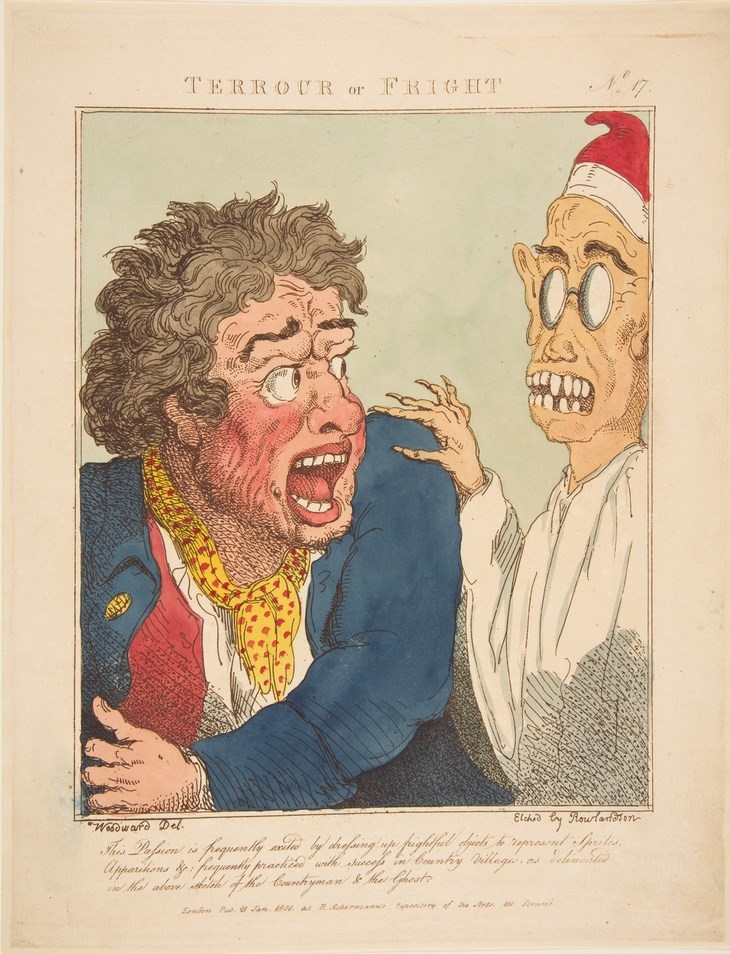 GEORGE MOUTARD WOODWARD (BRITISH, 1760?1809) TERROUR OR FRIGHT (LE BRUN TRAVESTIED, OR CARICATURES OF THE PASSIONS) JANUARY 21, 1800
GEORGE MOUTARD WOODWARD (BRITISH, 1760?1809) TERROUR OR FRIGHT (LE BRUN TRAVESTIED, OR CARICATURES OF THE PASSIONS) JANUARY 21, 1800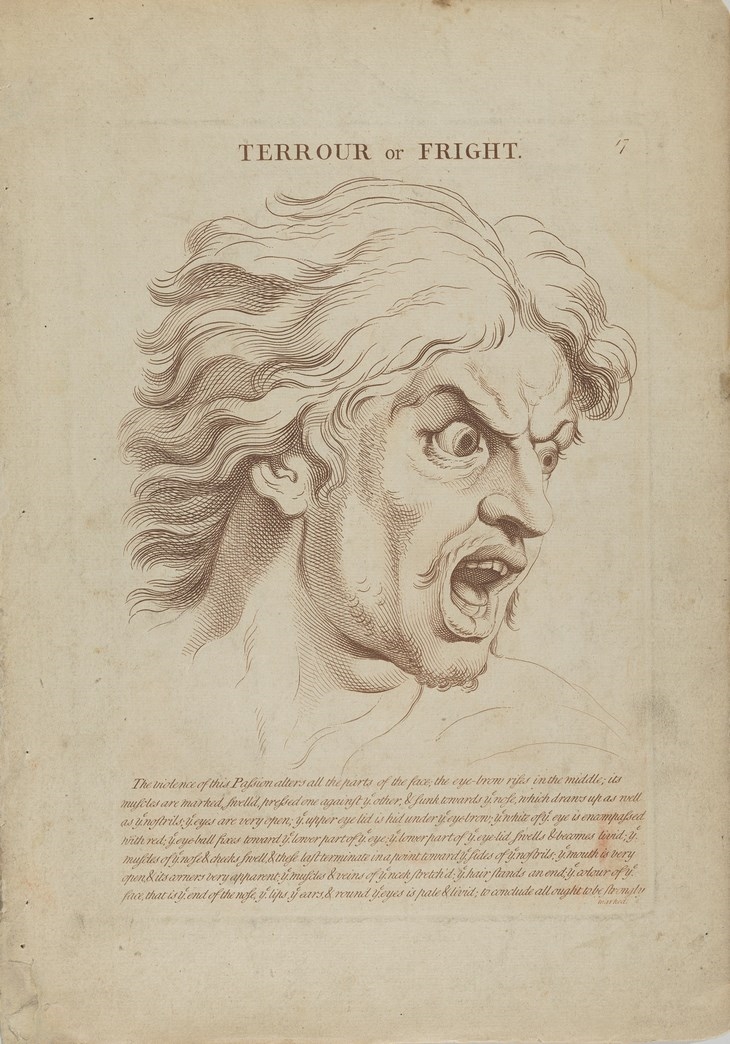 CHARLES LE BRUN (FRENCH 1619?1690) TERROUR OR FRIGHT (FROM HEADS REPRESENTING THE VARIOUS PASSIONS OF THE SOUL; AS THEY ARE EXPRESSED IN THE HUMAN COUNTENANCE: DRAWN BY THAT GREAT MASTER MONSIEUR LE BRUN) 1765 ENGRAVING WITH ETCHING 11 1/4 X 7 1/4 IN. (28.6 X 18.4 CM) THE ELISHA WHITTELSEY COLLECTION, THE ELISHA WHITTELSEY FUND, 1953 (53.638.31, 20-14)
CHARLES LE BRUN (FRENCH 1619?1690) TERROUR OR FRIGHT (FROM HEADS REPRESENTING THE VARIOUS PASSIONS OF THE SOUL; AS THEY ARE EXPRESSED IN THE HUMAN COUNTENANCE: DRAWN BY THAT GREAT MASTER MONSIEUR LE BRUN) 1765 ENGRAVING WITH ETCHING 11 1/4 X 7 1/4 IN. (28.6 X 18.4 CM) THE ELISHA WHITTELSEY COLLECTION, THE ELISHA WHITTELSEY FUND, 1953 (53.638.31, 20-14)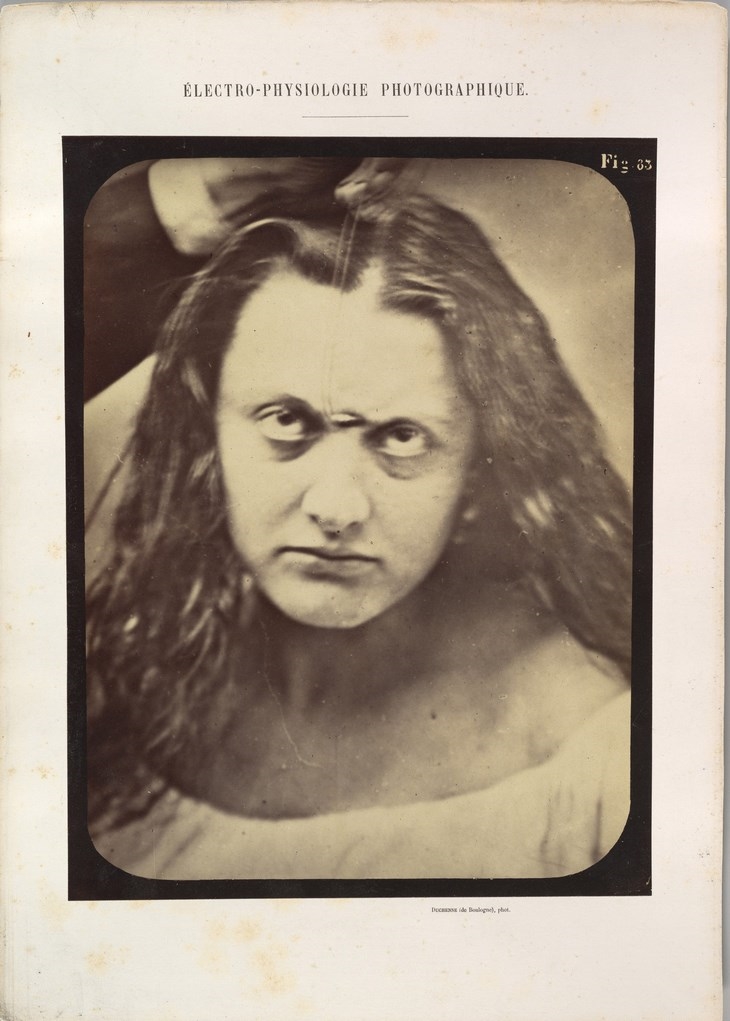 ADRIEN TOURNACHON (FRENCH, 1825?1903) GUILLAUME-BENJAMIN-ARMAND DUCHENNE DE BOULOGNE (FRENCH, 1806?1875) FIGURE 83: LADY MACBETH, FEROCIOUS CRUELTY 1854?56, PRINTED 1862 ALBUMEN SILVER PRINT FROM GLASS NEGATIVE PURCHASE, THE BUDDY TAUB FOUNDATION GIFT, DENNIS A. ROACH AND JILL ROACH, DIRECTORS; HARRIS BRISBANE DICK AND WILLIAM E. DODGE FUNDS; AND W. BRUCE AND DELANEY H. LUNDBERG GIFT, 2013 (2013.173.46)
ADRIEN TOURNACHON (FRENCH, 1825?1903) GUILLAUME-BENJAMIN-ARMAND DUCHENNE DE BOULOGNE (FRENCH, 1806?1875) FIGURE 83: LADY MACBETH, FEROCIOUS CRUELTY 1854?56, PRINTED 1862 ALBUMEN SILVER PRINT FROM GLASS NEGATIVE PURCHASE, THE BUDDY TAUB FOUNDATION GIFT, DENNIS A. ROACH AND JILL ROACH, DIRECTORS; HARRIS BRISBANE DICK AND WILLIAM E. DODGE FUNDS; AND W. BRUCE AND DELANEY H. LUNDBERG GIFT, 2013 (2013.173.46)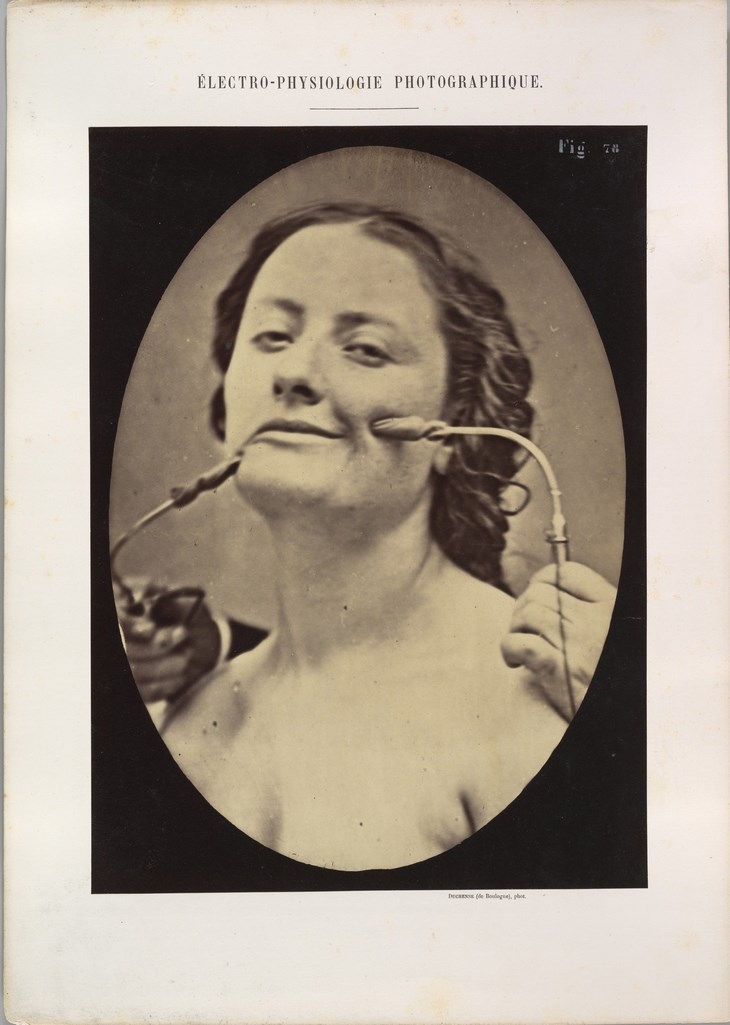 ADRIEN TOURNACHON (FRENCH, 1825?1903) GUILLAUME-BENJAMIN-ARMAND DUCHENNE DE BOULOGNE (FRENCH, 1806?1875) FIGURE 78: SCENE OF COQUETRY 1854?56, PRINTED 1862 ALBUMEN SILVER PRINT FROM GLASS NEGATIVE PURCHASE, THE BUDDY TAUB FOUNDATION GIFT, DENNIS A. ROACH AND JILL ROACH, DIRECTORS; HARRIS BRISBANE DICK AND WILLIAM E. DODGE FUNDS; AND W. BRUCE AND DELANEY H. LUNDBERG GIFT, 2013 (2013.173.43)
ADRIEN TOURNACHON (FRENCH, 1825?1903) GUILLAUME-BENJAMIN-ARMAND DUCHENNE DE BOULOGNE (FRENCH, 1806?1875) FIGURE 78: SCENE OF COQUETRY 1854?56, PRINTED 1862 ALBUMEN SILVER PRINT FROM GLASS NEGATIVE PURCHASE, THE BUDDY TAUB FOUNDATION GIFT, DENNIS A. ROACH AND JILL ROACH, DIRECTORS; HARRIS BRISBANE DICK AND WILLIAM E. DODGE FUNDS; AND W. BRUCE AND DELANEY H. LUNDBERG GIFT, 2013 (2013.173.43)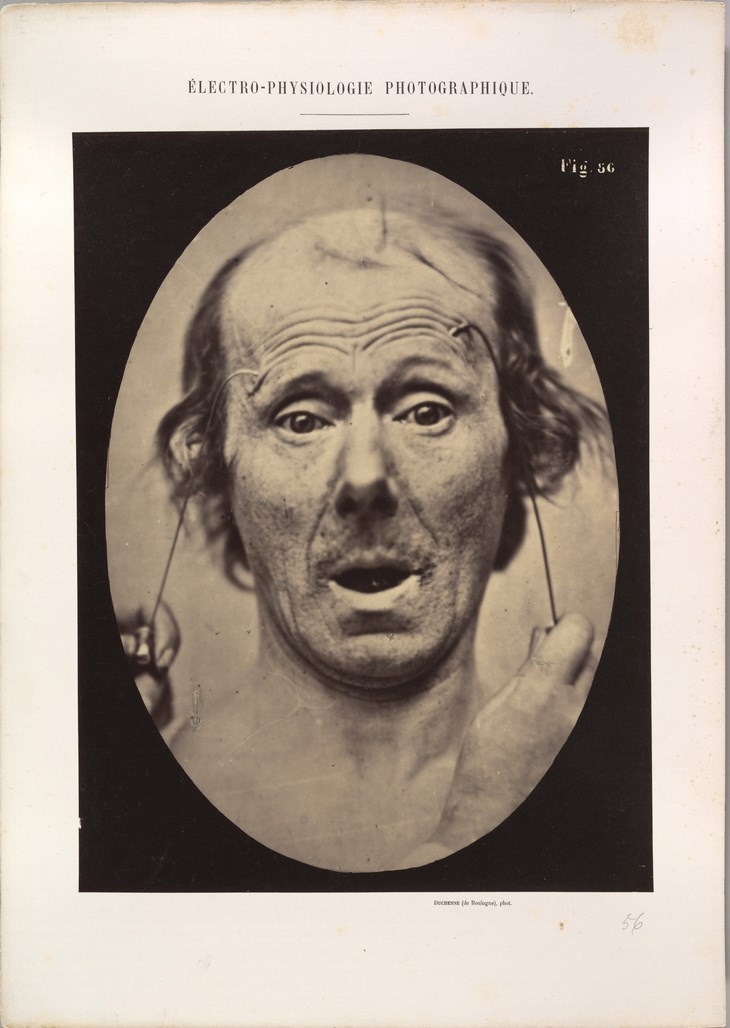 ADRIEN TOURNACHON (FRENCH, 1825?1903) GUILLAUME-BENJAMIN-ARMAND DUCHENNE DE BOULOGNE (FRENCH, 1806?1875) FIGURE 56: SURPRISE 1854?56, PRINTED 1862 ALBUMEN SILVER PRINT FROM GLASS NEGATIVE PURCHASE, THE BUDDY TAUB FOUNDATION GIFT, DENNIS A. ROACH AND JILL ROACH, DIRECTORS; HARRIS BRISBANE DICK AND WILLIAM E. DODGE FUNDS; AND W. BRUCE AND DELANEY H. LUNDBERG GIFT, 2013 (2013.173.33)
ADRIEN TOURNACHON (FRENCH, 1825?1903) GUILLAUME-BENJAMIN-ARMAND DUCHENNE DE BOULOGNE (FRENCH, 1806?1875) FIGURE 56: SURPRISE 1854?56, PRINTED 1862 ALBUMEN SILVER PRINT FROM GLASS NEGATIVE PURCHASE, THE BUDDY TAUB FOUNDATION GIFT, DENNIS A. ROACH AND JILL ROACH, DIRECTORS; HARRIS BRISBANE DICK AND WILLIAM E. DODGE FUNDS; AND W. BRUCE AND DELANEY H. LUNDBERG GIFT, 2013 (2013.173.33)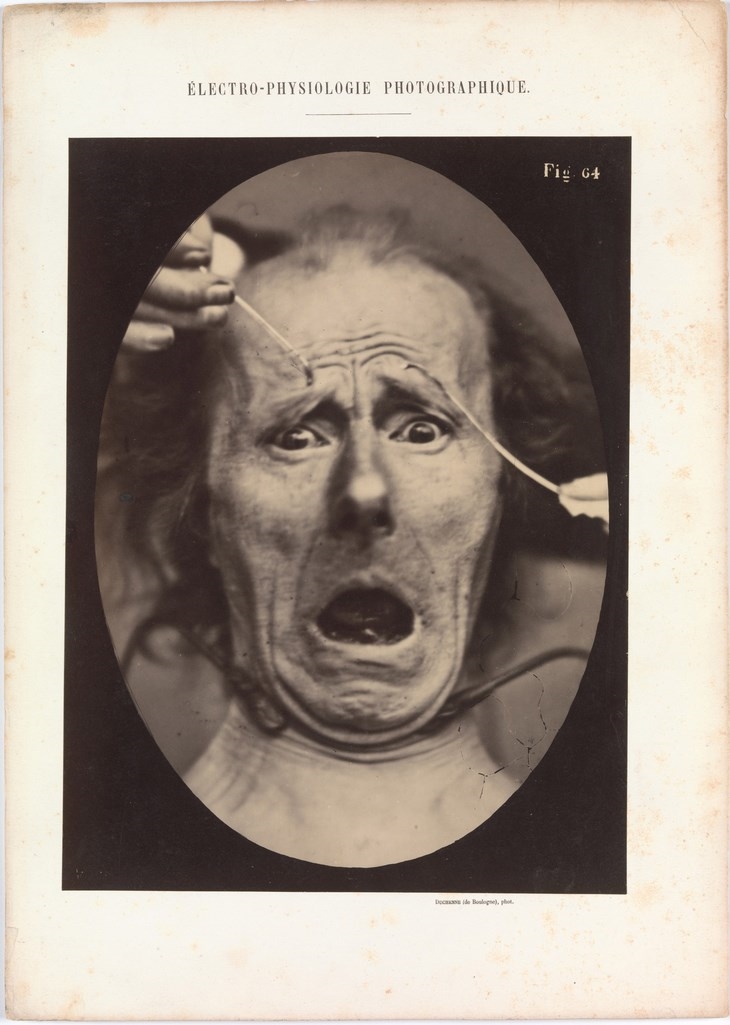 ADRIEN TOURNACHON (FRENCH, 1825?1903) GUILLAUME-BENJAMIN-ARMAND DUCHENNE DE BOULOGNE (FRENCH, 1806?1875) ELECTRO?PHYSIOLOGIE, FIGURE 64 1854?56, PRINTED 1862 ALBUMEN SILVER PRINT FROM GLASS NEGATIVE PURCHASE, THE BUDDY TAUB FOUNDATION GIFT, DENNIS A. ROACH AND JILL ROACH, DIRECTORS, 2012 (2012.140)
ADRIEN TOURNACHON (FRENCH, 1825?1903) GUILLAUME-BENJAMIN-ARMAND DUCHENNE DE BOULOGNE (FRENCH, 1806?1875) ELECTRO?PHYSIOLOGIE, FIGURE 64 1854?56, PRINTED 1862 ALBUMEN SILVER PRINT FROM GLASS NEGATIVE PURCHASE, THE BUDDY TAUB FOUNDATION GIFT, DENNIS A. ROACH AND JILL ROACH, DIRECTORS, 2012 (2012.140)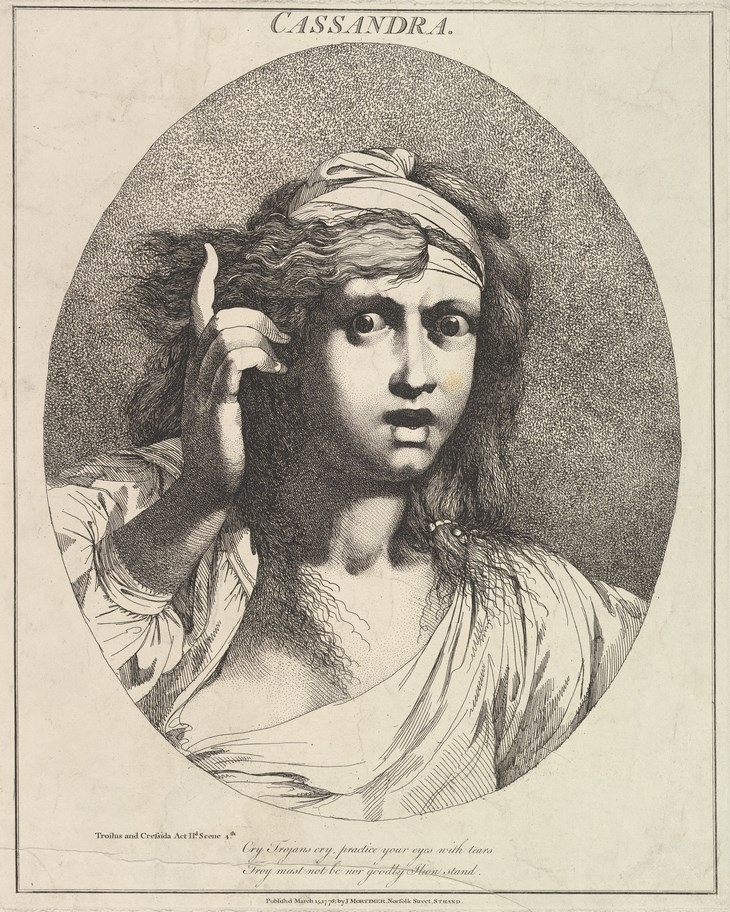 ETCHED AND PUBLISHED BY JOHN HAMILTON MORTIMER (BRITISH, 1740?1779) CASSANDRA (FROM TWELVE CHARACTERS FROM SHAKESPEARE) MARCH 15, 1776 ETCHING GIFT OF MRS. OLGA SICHEL AND MAX PHILIPPSON, 1962 (62.557.203)
ETCHED AND PUBLISHED BY JOHN HAMILTON MORTIMER (BRITISH, 1740?1779) CASSANDRA (FROM TWELVE CHARACTERS FROM SHAKESPEARE) MARCH 15, 1776 ETCHING GIFT OF MRS. OLGA SICHEL AND MAX PHILIPPSON, 1962 (62.557.203)READ ALSO: INSTEAD / DEPARTMENT OF ARCHITECTURE, UNIVERSITY OF THESSALY / CALL FOR APPLICATIONS

